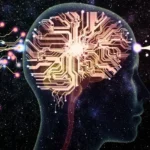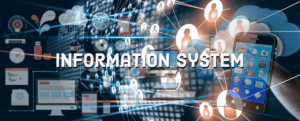In our interconnected world, where communication is key, universal translators emerge as technological marvels that break down language barriers, fostering seamless interaction in the global village. This article explores universal translators, unveiling their significance, underlying technologies, diverse applications, and the transformative impact they hold on cross-cultural communication in the modern era.
The Significance of Universal Translators
Universal translators mark a pivotal advancement in the realm of communication, transcending linguistic boundaries to facilitate understanding and collaboration on a global scale. Their significance lies in bridging the gap between speakers of different languages, promoting inclusivity, fostering international cooperation, and unlocking new opportunities for cultural exchange and business interactions. In an era where diversity is celebrated, they are catalysts for building connections and dismantling language barriers to pursue a more unified world.
Enabling Cross-Cultural Communication
At the core of the significance of universal translators is their role in enabling cross-cultural communication. By seamlessly translating spoken or written language, these technological marvels empower individuals to engage in conversations, negotiations, and collaborations without being hindered by language differences. It fosters a sense of unity and mutual understanding, allowing people from diverse linguistic backgrounds to connect personally and professionally.
Facilitating Global Business and Collaboration
Universal translators are crucial in facilitating global trade and collaboration in the business landscape. They empower businesses to communicate effectively with partners, clients, and customers worldwide, breaking down language barriers that might otherwise impede international transactions. It expands market reach and promotes a more interconnected and cooperative global economy.
Underlying Technologies of Universal Translators
The realization of universal translators is made possible through a convergence of cutting-edge technologies, each contributing to the seamless translation of languages in various contexts.
Natural Language Processing (NLP) Algorithms
At the heart of universal translators are sophisticated Natural Language Processing (NLP) algorithms. These algorithms enable the software to understand and interpret human language, considering nuances, idioms, and cultural context. By harnessing the power of artificial intelligence, it can provide contextually accurate translations beyond literal language conversion.
Machine Learning for Continuous Improvement
Machine Learning (ML) is a key component in the evolution of universal translators. These systems improve their translation accuracy over time through continuous exposure to diverse linguistic data. The capability to adapt and learn from new language patterns ensures that universal translators stay abreast of linguistic evolution and cultural shifts, enhancing their effectiveness in providing accurate and contextually relevant translations.
Speech Recognition and Synthesis
For spoken language translation, universal translators employ advanced speech recognition and synthesis technologies. These components enable the system to transcribe spoken words into text, translate the text, and then synthesize the translated content back into spoken language. The seamless integration of these technologies ensures that spoken conversations can flow naturally across language barriers.
Diverse Applications of Universal Translators
Universal translators find applications across diverse sectors, revolutionizing how we communicate in various contexts, from travel and diplomacy to healthcare and education.
Enhancing Travel and Tourism
Universal translators serve as invaluable companions for travelers exploring different corners of the globe. They break down language barriers, allowing tourists to navigate foreign destinations, interact with locals, and confidently immerse themselves in new cultures. It enriches the travel experience and promotes cultural exchange and understanding.
Facilitating Diplomacy and International Relations
In diplomatic circles, where effective communication is paramount, universal translators contribute to smoother interactions between representatives of different nations. They foster understanding, reduce misunderstandings, and enable diplomats to engage in nuanced discussions, transcending language differences to advance international cooperation.
Improving Healthcare Communication
In healthcare, universal translators are crucial in improving communication between medical professionals and patients from diverse linguistic backgrounds. It ensures patients receive accurate information about their health, treatment plans, and medications, contributing to better health outcomes and patient satisfaction.
Challenges and Future Developments in Universal Translators
While universal translators have made significant strides, they are not without challenges. Addressing these challenges and exploring future developments are integral to their continued evolution and widespread adoption.
Handling Cultural Nuances and Context
One challenge in universal translation is effectively handling cultural nuances and context. Languages often carry cultural intricacies that may not have direct equivalents in other languages. Future developments may focus on refining algorithms to better capture and convey these nuances, ensuring that translations are accurate and culturally sensitive.
Real-Time Translation for Complex Conversations
Achieving real-time translation for complex and nuanced conversations remains challenging. In situations where in-depth discussions or negotiations occur, it may face difficulties in accurately conveying subtle meanings and intentions. Ongoing developments may explore innovative approaches to enhance real-time translation capabilities in diverse and intricate conversational contexts.
Integration with Emerging Technologies
The future of universal translators may involve closer integration with emerging technologies such as augmented reality (AR) and virtual reality (VR). These integrations could provide users with immersive language experiences, where visual and auditory cues enhance the overall understanding and context of translated content.
Conclusion
Universal translators stand as powerful enablers of global communication, dismantling language barriers and fostering a more interconnected world. Their significance in promoting cross-cultural understanding, facilitating business interactions, and enhancing various sectors underscores their transformative impact.
As technology advances, it will likely play an increasingly integral role in shaping a future where effective communication knows no linguistic boundaries. The journey towards a truly connected global village paves the way for a world where language diversity becomes a source of enrichment rather than a barrier to collaboration.












